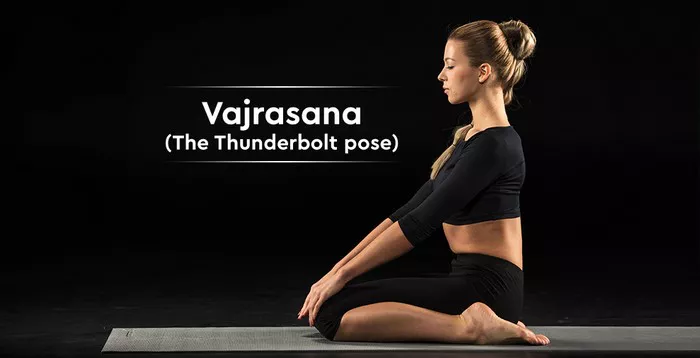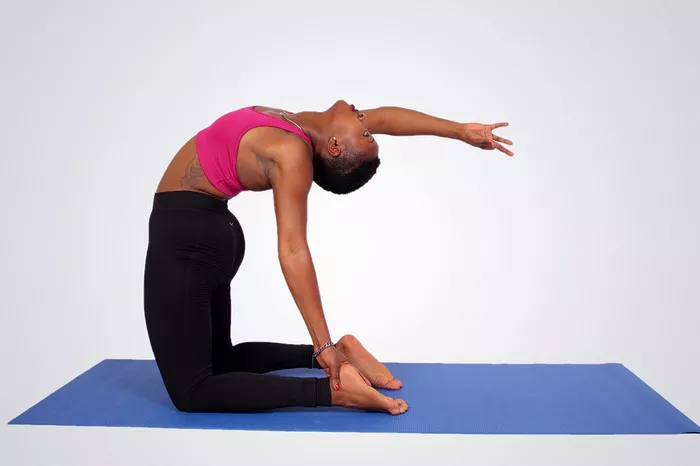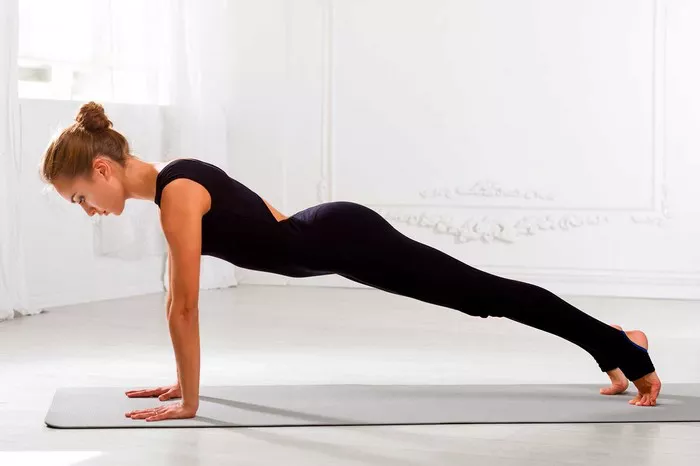Origins and Symbolism
Thunderbolt Pose, or Vajrasana, has a rich history rooted in ancient Indian tradition. The term “Vajra” means thunderbolt or diamond, symbolizing strength, resilience, and indestructibility. This pose has been a staple in various yogic practices and is often used in meditation and pranayama (breathing exercises). The pose’s simplicity belies its depth, making it a favorite among both novice and seasoned practitioners.
The thunderbolt, a powerful weapon in Hindu mythology, represents spiritual power and transformation. Vajrasana embodies these qualities, serving as a conduit for channeling energy and fostering inner strength. The seated posture symbolizes stability and grounding, essential attributes for deep meditation and introspection. It is also associated with the solar plexus chakra, Manipura, which governs personal power and self-esteem.
Physical and Mental Benefits
Physical Benefits
1. Improves Digestion: Vajrasana aids in digestion by reducing blood flow to the legs and directing it towards the abdominal region. This increased circulation helps alleviate digestive issues such as bloating and constipation.
2. Strengthens Lower Body Muscles: Sitting in Thunderbolt Pose strengthens the muscles in the legs, including the thighs, knees, and calves. It also enhances flexibility in the ankles and feet.
3. Relieves Back Pain: By promoting an upright spine, Vajrasana helps reduce tension in the lower back, providing relief from pain and discomfort.
4. Enhances Posture: Regular practice of this pose encourages proper alignment of the spine, shoulders, and head, improving overall posture.
5. Supports Respiratory Health: The pose facilitates deep, diaphragmatic breathing, which can improve lung capacity and respiratory function.
Mental Benefits
1. Calms the Mind: Thunderbolt Pose is inherently meditative, helping to quiet the mind and reduce stress and anxiety.
2. Enhances Focus: The stability and grounding nature of Vajrasana foster concentration and mental clarity, making it an ideal posture for meditation.
3. Promotes Mindfulness: Sitting in this pose encourages a state of mindfulness, helping practitioners stay present and aware of their thoughts and sensations.
4. Balances Emotions: The pose’s calming effect on the nervous system can help balance emotions and enhance overall emotional well-being.
5. Encourages Introspection: Vajrasana’s meditative quality allows for deeper introspection, fostering personal growth and self-awareness.
Variations and Modifications
Variations
1. Supta Vajrasana (Reclined Thunderbolt Pose): This advanced variation involves reclining back from Vajrasana until the back rests on the floor, with arms extended overhead. It enhances flexibility in the spine and opens the chest.
2. Parvatasana in Vajrasana (Mountain Pose in Thunderbolt Pose): In this variation, practitioners interlace their fingers and extend their arms overhead while sitting in Vajrasana. This adds a stretch to the shoulders and arms.
3. Virasana (Hero Pose): Similar to Vajrasana, but the feet are placed beside the hips rather than underneath, providing a deeper stretch to the thighs and knees.
Modifications
1. Using a Cushion: Beginners or those with tightness in the ankles or knees can place a cushion or folded blanket between the calves and thighs to reduce discomfort.
2. Wall Support: Practicing Vajrasana with the back against a wall can help maintain proper alignment and provide additional support.
3. Gentle Version: For those with knee issues, sitting on a yoga block placed between the feet can alleviate pressure on the knees while still reaping the pose’s benefits.
Step-by-Step Instructions
Preparation
Before attempting Thunderbolt Pose, it’s important to prepare your body and mind. Find a quiet, comfortable space where you won’t be disturbed. Wear loose, comfortable clothing that allows for free movement. If you have any knee or ankle issues, have a cushion or yoga block nearby for support.
Step-by-Step Guide
1. Start in a Kneeling Position: Begin by kneeling on the floor with your knees close together and your big toes touching.
2. Sit Back on Your Heels: Slowly sit back so that your buttocks rest on your heels. Your feet should be in line with your shins, and your heels should be touching your buttocks.
3. Adjust Your Position: Ensure that your spine is straight and your shoulders are relaxed. Your hands can rest on your thighs with palms facing down.
4. Engage Your Core: Slightly engage your core muscles to support your spine and maintain an upright posture.
5. Align Your Head: Keep your head in a neutral position with your chin slightly tucked. Your gaze can be forward or down, whichever feels more comfortable.
6. Breathe Deeply: Take slow, deep breaths, allowing your belly to expand with each inhale and contract with each exhale.
7. Hold the Pose: Stay in Vajrasana for at least 1-5 minutes, gradually increasing the duration as you become more comfortable. Focus on your breath and the sensations in your body.
8. Release the Pose: To come out of the pose, gently lift your buttocks off your heels and return to a kneeling position. Stretch your legs out in front of you and shake them out to release any tension.
Tips for Beginners
Use Props: If you experience discomfort in your knees or ankles, place a cushion or folded blanket between your calves and thighs for added support.
Start Slowly: Begin with shorter durations and gradually increase the time as your flexibility and comfort improve.
Focus on Breath: Pay attention to your breathing, allowing it to be slow and steady. This will help you stay present and deepen your practice.
Precautions and Contraindications
Precautions
1. Knee Issues: If you have any pre-existing knee conditions or injuries, be cautious when practicing Vajrasana. Use a cushion or yoga block to reduce pressure on the knees.
2. Ankle Discomfort: Those with tight ankles or ankle injuries should also use props to alleviate discomfort.
3. Pregnancy: Pregnant women should consult with a healthcare provider before practicing Vajrasana and may need to use modifications to ensure safety and comfort.
4. Joint Pain: If you experience any pain in your knees, ankles, or hips while in the pose, come out of it immediately and adjust your position or use additional props.
Contraindications
1. Severe Knee Injuries: Individuals with severe knee injuries or conditions such as meniscus tears or ligament damage should avoid Vajrasana unless cleared by a healthcare professional.
2. Ankle Surgery: Those who have recently undergone ankle surgery should avoid this pose until fully healed and cleared by a doctor.
3. Severe Back Problems: Individuals with severe lower back issues or spinal conditions should consult with a healthcare provider before attempting Vajrasana, as the pose may exacerbate certain conditions.
Conclusion
The Thunderbolt Pose, or Vajrasana, is a versatile and accessible yoga posture that offers numerous physical and mental benefits. Its origins and symbolism reflect its profound impact on the body and mind, making it an essential component of any yoga practice. Whether you are a beginner or an experienced yogi, incorporating Vajrasana into your routine can enhance digestion, improve posture, and promote mental clarity. By understanding the variations, modifications, and precautions associated with this pose, you can safely and effectively integrate it into your practice. As with any yoga posture, it is important to listen to your body and make adjustments as needed to ensure a safe and beneficial experience.
























